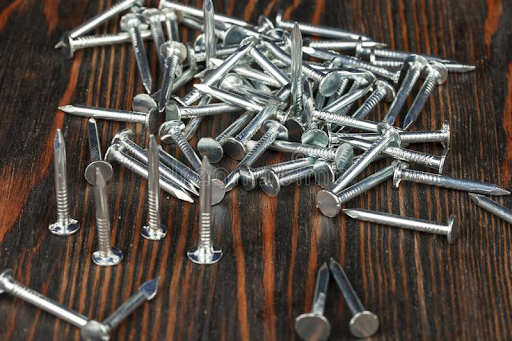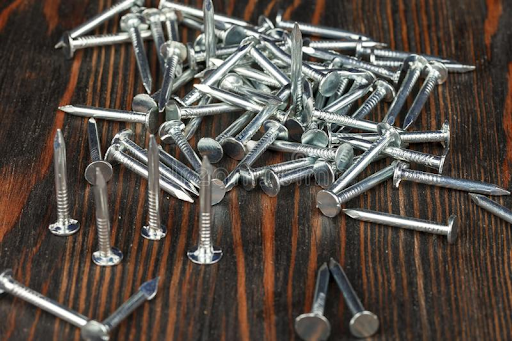The Nail

Nails were first invented by Jacob Perkins in America and by Joseph Dyer in England in 1795. It is probably used in every construction project. Square-head nails were created by a blacksmith who squared the heads of the nail, which helped build wooden boxes and crates. They are also hot dip galvanized for rust resistance in exterior applications. Now there are different types of construction nails which people can use.
Nails are a basic type of fastener and have been used in construction in some form for at least 3,000 years. For as long as humans have been constructing anything, we have been using nails.
From the handmade nail found in the Roman Empire to the invention of the slitting mill to cut nails in the 16th century, nails have stood the test of time. What's even more amazing is that the nails we use today are not that different from those that were used aeons ago. Much like the wheel, the humble nail still looks a lot like it did way back then.

It is safe to say that nails have a rich history as they have laid the foundation work for our modern construction techniques.
Although nails have not changed much in appearance, their fundamentals have somewhat been adapted. In today's age, we have different types of nails to do different jobs. If you thought that all nails are created equal, you would be wrong.
Nails are usually hammered into place by striking them squarely on the head. By driving the nail in this way, it is less likely to bend or break. When driving a nail into timber, it is good practice to position the nail at a slight angle to the grain of the timber so that it does not split.
Nails are most commonly made of steel, steel wire is fed into a machine which cuts out individual nail lengths. Wire pieces are held by grippers while a hammer flattens one projecting end to form the head. It is then cut to a specific length and point.
Take a look at the leading types of nails found in construction, learn how best to differentiate them, and the ideal use for each.
Some Types of Nails:
Common nails are the most widely-used type of nail for joining timber and other elements, particularly where a rougher finish is acceptable. It is good practice to use nails that are at least three times longer than the depth of the thinner material that is being nailed.
Finishing nails are similar to common nails but have much smaller heads which sit flush with the timber surface and provide a neater finish. A nail set can be used to recess the head to conceal it completely. This capability means that they are often used in furniture and decorative or exposed timber.
Box nails are commonly used for light construction as they are slightly thinner than common nails and have less strength.
Roofing nails have larger heads and are often used for nailing shingles, attaching asphalt and other roofing purposes. The thin material is held in place and prevented from tearing loose by the large head.
References:
https://www.buildworld.co.uk
https://www.designingbuildings.co.uk/wiki/Home
Author Biography
Thahmeed Ali Shafeeq was born in male' in 2008 and is now studying at Majeediyya School. He loves playing football and plays it almost every day. He also likes learning about marine biology and loves going snorkelling. He wants to be a pilot and likes watching action movies.

Cite this article as:
Thahmeed Ali Shafeeq, The Nail, theCircle Composition, Volume 2, (2022). https://thecirclecomposition.org/the-nail
